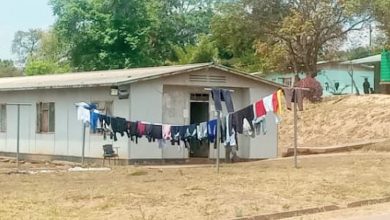Teacher-student-ratio worrying
In Malawi’s primary schools, the teacher-to-student ratio is already a concern, and for students with disabilities, the situation is even worse.
Ministry of Education statistics shows one teacher on average serves about 60 learners in primary schools and in extreme cases, one teacher serves up to 150 learners.
This makes teaching and learning a challenge conasidering that handling a congested classroom is overwhelming and at the same time learners’ concentration in such an environment becomes problematic.

The situation gets even worse in cases of learners with special needs.
The Malawi National Strategy on Inclusive Education for the 2017-2018 academic year, indicates an international recommendation of about 24 learners with special needs per every teacher of special needs.
However, this is not the case in Malawi where the teacher-to-learner ratio for those with special needs goes as far as 1 to 100.
To make matters worse, the majority of these learners learn without enough special needs teaching and learning resources.
The story of 21-year-old Pemphero Ndiope, who is in Standard Eight at Siyaludzu Resource Centre for the Blind in Ntcheu District testifies to the learning struggle for learners with special needs in Malawi.
Waking up at around 4 am, navigating through familiar corridors, with his white cane tapping out a rhythmic path, as he makes his way to the dormitory’s communal bathroom, defines his daily preparation routine for pursuing academic knowledge.
As if his physical condition is not a barrier enough, lack of proper visual aide resources makes her hustle for academic knowledge even worse.
For instance, Siyaludzu Resource Centre only has one outdated Braille printer which when it malfunctions, Pemphero is forced to use hand-written notes which are never easy to transfer information into the brain of a visually impaired soul.
He has a personal braille text book, but is outdated. The school has a computer lab, equipped with outdated software, offering limited access to assistive technology, which further hinders Pemphero’s ability to engage with digital learning materials.
As he heads to class, Ndiope’s determination to succeed is palpable, but the learning environment is conducive to his aspirations.
He says: “When the braille papers finish, it is difficult for our teachers to print our work; hence, we do not write our examinations which affects our performance”.
Pemphero was, however, not born blind. He became blind when he was affected by sickness in Form One. He cannot describe how strange the disease was.
Victor Lazarus, a teacher-in-charge at the facility, agrees that there are numerous challenges disturbing basic education for special needs learners.
”Our ability to provide quality education for all is faced with lack of resources to tailor for their needs. For example, we are only three specialised teachers against a population of about 150 learners with special needs,” he says.
Ntcheu Inclusive Education coordinator Sara Kapatamoyo highlights the district’s struggles to integrate special needs students into formal education.
“Take our district, for example, where out of all the primary schools in the district we only have less than 10 specialised teachers which hinder the provision of quality education,” he says.
Pemphero’s struggle to understand the world better serves as a poignant reminder of the systemic barriers learners with disabilities, especially the visually impaired, face in Malawi.
Despite the progress made in promoting inclusive education, lack of resources, trained teachers and accessible infrastructure continues to hinder the potential of students such as Pemphero.
John Chekani is another special needs teacher at Zingwangwa Primary School in Blantyer.
He says in the Blantyre education zone where he works, 10 primary schools only have three special needs teachers.
These are assigned to rotate within schools in a bid to ensure that learners with special needs equally learn.
He says the struggle also touches their side as they work to instill knowledge in such learners.
“We also have challenges, for example, lack of transport .
“There is need to have many ordinary teachers trained in handling special needs learners. Otherwise, the situation is not as good,” he says.
This is the situation amid the country’s efforts to achieve the long-term development agenda, Malawi 2063 (MW2063).
Enabler number five of the MW2063, for instance, puts focus on inclusive human capital development through education and technical skills development for all.
As such, this highlights the need for the relevant authorities to develop deliberate strategies and policies that provide specialised support for special needs learners.
In so doing, the country will, then, be able to achieve an inclusively wealthy, and self-reliant status for its citizens by the year 2063.





